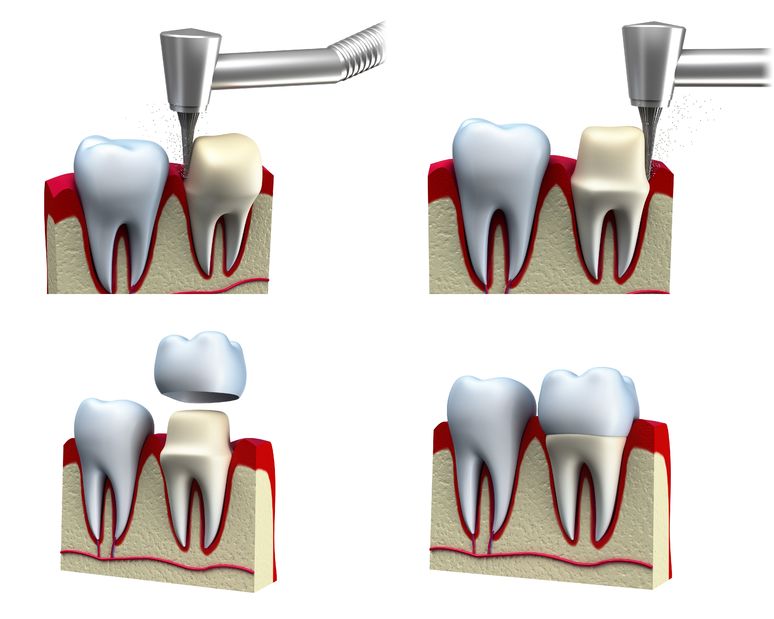Dental Crown (Cap)
When your dentist decides to use a full coverage type of restoration called a dental crown, the reason for making this suggestion will vary from case to case. A crown is a type of dental restoration which completely caps or encircles a tooth or dental implant. Dental crowns are often needed when a large cavity threatens the ongoing health of a tooth.
When do You Need Dental Crowns?
- A previously filled tooth has more filling than tooth. When a filling occupies more than say 50% of a tooth the existing tooth structure becomes weakened and may no longer support the filling.
- Your tooth has become discolored resulting in unwanted esthetics.
- Teeth are fractured. Sometimes these fractures are visible, other times they may only be diagnosed when there are complaints of pain during chewing.
- After your tooth has had Endodontic therapy (root canal)– Teeth tend to become brittle after root canal and may be more apt to fracture. By placing a crown we tend to protect your tooth from fracture.
- Replacement of missing teeth requires crowning adjacent teeth in order to support the missing teeth.
- Replacement of existing dental crowns or bridges.
The First Step in Making Your New Dental Crown

Dental Crown Preparation
We want to assure you that your dental visit will be totally comfortable. We begin by giving you a local anesthetic. Depending upon the type of local anesthetic we use, you can expect to be numb for one to four hours. If your anesthesia should last longer, do not be concerned. Not everyone reacts to medication in the same manner. One word of caution: While you are numb, please be careful not to bite your lip or tongue. A soft diet or no meal at all while you are numb is probably a good idea. If your child has been the patient, please watch them carefully to be sure they do not play with their tongue or lip while it is numb.
Once your teeth are totally numb, we will prepare your tooth in a very specific way. After your tooth is fully prepared, we proceeded with the impression stage. We used a thin of specially fabricated cord which we will place around your tooth in order to get the impression material under the gum where the crown ends. Please rest assured that this small piece of cord will be removed prior to the end of today’s visit.
Once the impression stage was completed, we will place a temporary (transitional) crown on your tooth. These plastic (acrylic) restorations are placed on teeth to protect them and the gum tissues between dental visits. The temporary cementing medium used is designed to allow me, to easily remove them at your next scheduled visit.
Should you experience any discomfort you can take a mild analgesic (Tylenol, Advil, Anacin, ect) as long as there is no medical contraindication based upon your medical history. Typically, you can take anything you would normally take for a headache. If the discomfort persist, please call your dentist office.









